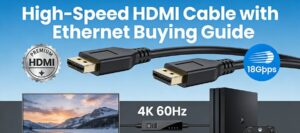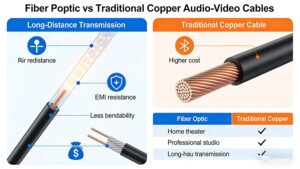When comparing USB-C to USB-C cables with USB-A to USB-C cables, there are several key differences to consider. These differences pertain to the connectors, data transfer speeds, power delivery capabilities, and overall compatibility.
Key Differences
1. Connector Type
- C to C: Both ends of the cable have USB-C connectors. This type of cable is used to connect devices that have USB-C ports, such as modern smartphones, tablets, laptops, and some peripherals.
- A to C: One end of the cable has a USB-A connector, and the other end has a USB-C connector. This type of cable is used to connect USB-C devices to older devices and chargers that have USB-A ports.
2. Data Transfer Speeds
- USB-C to USB-C: These cables often support higher data transfer speeds, especially when used with USB 3.1, USB 3.2, or USB4 standards. Data transfer speeds can reach up to 40 Gbps with USB4.
- USB-A to USB-C: These cables generally support lower data transfer speeds. USB-A ports are typically associated with USB 2.0 (480 Mbps) or USB 3.0 (5 Gbps) standards. However, some USB-A to USB-C cables can support USB 3.1 speeds (10 Gbps), depending on the specifications of the USB-A port.
3. Power Delivery (PD) Capabilities
- USB-C to USB-C: These cables can support the USB Power Delivery (PD) standard, which allows for higher power levels. USB-C to USB-C cables can deliver up to 100 watts of power, making them suitable for charging laptops, tablets, and other high-power devices.
- USB-A to USB-C: These cables typically support lower power levels. USB-A ports usually provide up to 2.5 watts (USB 2.0) or 4.5 watts (USB 3.0) of power. Some USB-A to USB-C cables can support higher power delivery (up to 15 watts) when used with compatible chargers.
4. Compatibility and Use Cases
USB-C to USB-C:
Modern Devices: Ideal for connecting modern devices that have USB-C ports, such as newer smartphones, tablets, and laptops.
High-Speed Data Transfer: Suitable for applications that require high-speed data transfer, such as transferring large files or connecting to high-resolution monitors.
Fast Charging: Used for fast charging devices that support USB PD, including laptops and tablets.
USB-A to USB-C:
Legacy Devices: Useful for connecting USB-C devices to older computers, chargers, and peripherals that have USB-A ports.
Widespread Compatibility: Provides backward compatibility with older USB standards, making it easier to connect new devices to existing infrastructure.
Charging and Data Transfer: Suitable for charging and data transfer, but with limitations on speed and power delivery compared to USB-C to USB-C cables.
Here’s a summary table:
| Cable Type | Connectors | Common Uses |
| USB-C to C | USB-C on both ends | Connecting two USB-C devices, high-speed data transfer, fast charging |
| USB-A to C | USB-A, USB-C | Connecting older USB-A devices to newer USB-C devices, charging USB-C devices |
5. Physical Design and Durability
USB-C to USB-C:
Reversible Connector: Both ends of the cable have a reversible USB-C connector, eliminating the need to worry about plug orientation.
Durability: USB-C connectors are designed to be more durable, with a rated lifespan of around 10,000 insertion cycles.
USB-A to USB-C:
Non-Reversible Connector: The USB-A end is not reversible, meaning it must be plugged in with the correct orientation.
Durability: While USB-A connectors are also durable, they do not offer the same level of convenience as USB-C connectors.
Conclusion
The choice between USB-C to USB-C and USB-A to USB-C cables depends on your specific needs and the devices you are using. USB-C to USB-C cables offer higher data transfer speeds, greater power delivery capabilities, and the convenience of reversible connectors, making them ideal for modern devices and high-performance applications. USB-A to USB-C cables, on the other hand, provide compatibility with older devices and infrastructure, making them useful for connecting new USB-C devices to existing USB-A ports.







